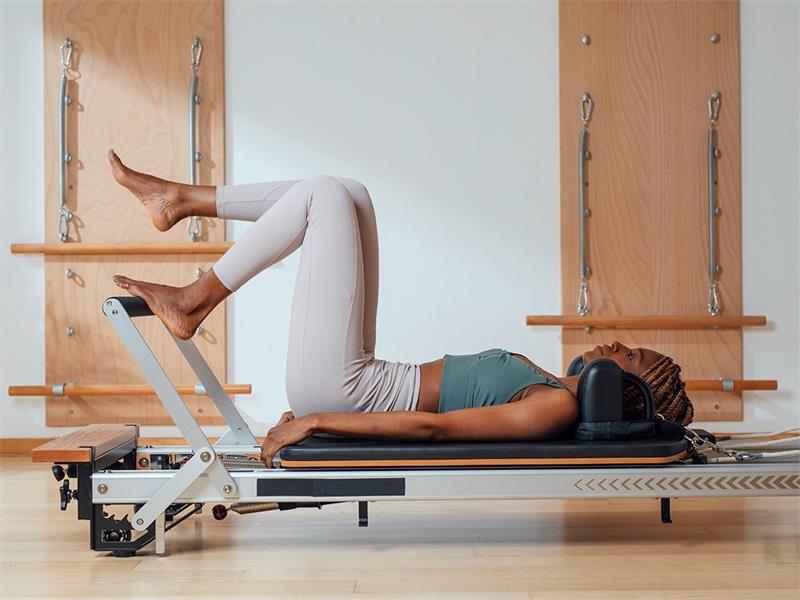Contents
Introduction
We all know how important exercise is for our health, but many of us struggle to find the right type of exercise that works for us. Resistance training, also known as strength training or weightlifting, is an excellent way to improve your overall fitness and achieve specific goals. Not only does it help build muscle and strength, but it also has numerous other benefits for your body and mind. The Importance of Resistance Training in a Fitness Routine
Resistance training should be an important part of any fitness routine because it helps you maintain and increase muscle mass, bone density, and overall strength. As we age, our muscles naturally start to weaken and lose mass.
Resistance training can help slow down this process by challenging your muscles and forcing them to adapt and grow stronger. In addition to improving physical health, resistance training can also have positive effects on mental health.
It can boost your confidence and self-esteem as you see improvements in your strength and abilities. It can also help reduce stress levels by providing a healthy outlet for pent-up energy. The Benefits of Incorporating Resistance Training into Your Fitness Routine
There are many benefits to incorporating resistance training into your fitness routine. One major benefit is increased metabolism. When you perform resistance exercises, you burn calories not only during the workout itself but also throughout the day as your body recovers from the workout.
Another benefit is improved posture and balance. By strengthening the muscles in your back, core, legs, and shoulders through resistance exercises like squats or deadlifts, you’ll improve your overall posture which will lead to better balance when performing everyday activities like walking or standing.
Resistance training can improve athletic performance in other areas such as endurance sports or team sports. By building up strength through resistance exercises you’ll be able to run faster or jump higher with greater ease.
Overall there are so many reasons why adding resistance training to your fitness routine is a great decision. Not only will it help you look and feel better physically, but it can also improve your mental well-being and overall quality of life.
Understanding Resistance Training
What is Resistance Training and How Does it Work?
Resistance training, also known as strength training or weightlifting, is a form of exercise that involves using external resistance to target specific muscle groups. The goal of resistance training is to overload the muscles with tension, which in turn causes them to adapt and grow stronger over time.
This type of training can help improve muscular strength, endurance, and overall body composition. The principle behind resistance training is simple: when you apply an external force against your muscles (such as lifting weights), they respond by adapting and growing stronger.
This happens because the tension placed on the muscle fibers during exercise causes microscopic damage to occur. As your body repairs this damage, it builds up additional tissue in the form of new muscle fibers, making your muscles bigger and stronger.
The Different Types of Resistance Training
There are several types of resistance training that you can use to build muscular strength and size. Some popular options include:
Bodyweight exercises: These exercises involve using your own body weight as resistance.
Examples include push-ups, squats, lunges, and planks.
Free weights: These are dumbbells or barbells that you can use to add external resistance to your workouts.
Examples include bicep curls, bench presses, shoulder presses, and deadlifts.
Machines: These are usually found at gyms and fitness centers where you sit or stand on a machine with handles or levers attached for resistance which allows for better isolation targeting specific muscle groups such as chest press machines or leg curl machines.
Each type of resistance training has its own unique benefits and drawbacks depending on what you are trying to achieve with your workout routine. However, most experts agree that a combination of these types leads to a well-rounded workout routine that targets all major muscle groups.
Setting Goals and Planning Your Routine
The Importance of Setting Goals Before Starting a Resistance Training Routine
Before embarking on any new fitness regimen, it’s essential to consider what you want to achieve from your efforts. Identifying clear goals will make it easier to create a plan that works for your lifestyle and fitness level while ensuring that you stay motivated throughout the journey.
Whether you’re looking to build muscle mass, improve your physical performance, or simply maintain your current fitness level, having specific goals in mind can help guide your workouts. Many people make the mistake of starting a resistance training routine without setting specific goals beforehand.
Without proper planning and direction, it’s easy to become discouraged when progress is slow or difficult to see. Setting realistic goals and tracking your progress along the way will help you stay on track towards achieving long-term success.
Tips for Creating a Plan That Works for Your Lifestyle and Fitness Level
Once you’ve established clear goals for yourself, it’s time to create a plan that fits into your daily routine and accommodates any physical limitations or challenges you may face. Here are some tips for creating an effective resistance training plan:
1. Start Small: If resistance training is new to you, it’s essential to pace yourself at first rather than diving right in with heavy weights or intense workouts that could lead to injury.
Begin with light weights and low-impact exercises before gradually increasing the intensity over time.
2. Make Time: Consistency is key when it comes to resistance training, so aim for at least two days per week of dedicated strength-building exercises within your overall workout routine.
3. Mix It Up: To avoid boredom or burnout from repetitive workouts, try incorporating different exercises that target different muscle groups throughout the week.
4. Consult With an Expert: Working with an experienced personal trainer or fitness professional can be especially helpful if you’re new to resistance training or have specific concerns about physical limitations or injuries.
5. Celebrate Milestones: As you progress towards your goals, it’s important to celebrate each milestone along the way. This can help keep you motivated and focused on achieving even greater success in the future.
Warm-Up and Cool Down: Preparing Your Body for Resistance Training
The Importance of Warming Up Before Beginning Any Type of Exercise
When it comes to resistance training, warming up is an essential part of preparing your body for the workout ahead. A proper warm-up increases your heart rate warms up your muscles, and helps to prevent injuries. One effective warm-up exercise is a light jog or brisk walk on a treadmill or around the block.
This will get your heart rate up and increase blood flow throughout your body. You can also do dynamic stretching exercises such as leg swings, arm circles, and walking lunges to activate your muscles.
Remember that warming up should not be rushed or skipped altogether. Take at least 5-10 minutes to properly prepare your body for resistance training.
Effective Warm-Up Exercises for Resistance Training
There are several different exercises you can do in order to properly warm up before starting resistance training. One effective exercise is foam rolling which helps increase blood flow in the targeted muscle groups and softens tissue fibers so they can be stretched more effectively during exercise. Another great option is a band pull-apart with light bands which warms up the shoulder joint before doing any upper body exercises; just make sure that it’s a lighter band so that it will not cause any fatigue before beginning actual workout routines.
In addition, some specific stretches that target major muscle groups like quads, glutes, and hamstrings could also be done as part of the warm-up routine. For example, hamstring stretches like standing hamstring stretch or seated hamstring stretch are both excellent options that you can do while standing or sitting down respectively.
Why Cooling Down After Exercise Is Important
Just as warming up is important before starting resistance training exercises, cooling down after exercising is equally important. A proper cool-down will help prevent soreness, reduce the risk of injury, and promote recovery.
One effective cool-down exercise is static stretching which involves holding a muscle in tension to increase its flexibility. This helps to reduce muscle tension and reduce the risk of injury in future workouts.
Another great cooling-down exercise is foam rolling which can also be used during warm-up sessions, it’s a great exercise for both scenarios because it helps with increasing blood flow in targeted muscle groups and reducing muscle soreness or tightness. Remember that cooling down should take at least 5-10 minutes to properly stretch out your muscles after resistance training exercises.
Choosing Exercises for Your Routine
You’ve established your fitness goals and set up a resistance training plan. Now it’s time to start selecting exercises that target specific muscle groups. The beauty of resistance training is that there are countless ways to challenge your muscles and achieve the results you seek, so it’s important to choose exercises that fit your needs and preferences.
Targeting Specific Muscle Groups
The key to choosing the right exercises is understanding which muscle groups you want to target. There are different types of exercises that work different parts of the body, so it’s essential to have a clear idea of what you want to achieve with each workout.
For example, if you’re looking for a chest workout, you’ll want to include exercises like bench presses or push-ups in your routine. Back workouts may include pull-downs or rows while leg workouts could range from squats and lunges to calf raises.
Examples of Exercises For Each Muscle Group
Here are some examples of effective resistance training exercises for each muscle group:
- Chest: bench press, push-ups, chest flyes
- Back: pull-ups, rows (dumbbell or barbell), lat pulldowns
- Biceps: standing bicep curls (dumbbell or barbell), hammer curls
- Triceps: tricep dips, overhead extensions (with dumbbells or barbells)
- Legs: squats (front and back), lunges (walking or stationary), calf raises
- Abs: crunches, sit-ups, plank variations
Note that these examples only scratch the surface when it comes to selecting effective resistance training exercises; there are plenty more variations out there that can help you achieve your fitness goals. Keep in mind that it’s important to choose exercises that work for your body and fitness level. As you get stronger, you may need to increase the weight or resistance of your exercises to continue challenging your muscles and seeing results.
Proper Form and Technique
The Importance of Proper Form and Technique
When it comes to resistance training, proper form and technique are crucial. Not only do they help prevent injuries, but they also ensure that you are targeting the right muscles for maximum benefit.
Additionally, proper form and technique can make your workouts more efficient by allowing you to lift more weight with less effort. One of the biggest mistakes people make when starting a resistance training routine is sacrificing form for weight.
While lifting heavy weights may seem impressive, if you are not using the proper form and technique, you risk injuring yourself or working the wrong muscles. The good form ensures that your muscles are being worked in a way that will maximize results while minimizing risk.
Tips on Maintaining Proper Form
There are several things you can do to maintain proper form during resistance exercises: 1. Start with lighter weights: Begin each exercise with a weight that is light enough for you to perform 8-12 repetitions with good form. As you become stronger, gradually increase your weight.
2. Use mirrors: Position yourself in front of a mirror when performing exercises so that you can see your body alignment and correct any imbalances. 3. Engage your core: Keeping your core engaged during resistance exercises helps maintain good posture and prevents back injuries.
4. Focus on the muscle being worked: Concentrate on contracting the muscle being targeted during each exercise instead of just going through the motions. 5. Ask for help: Don’t be afraid to ask a trainer or experienced friend for feedback on your form and technique.
Incorporating Proper Form into Your Routine
Incorporating proper form into your routine starts before even picking up any weights – it begins with understanding how each exercise should be performed correctly. Take time to research each exercise online or work with a personal trainer or experienced friend to understand the proper form for each exercise you plan to incorporate into your routine.
From there, start with lighter weights and focus on executing each exercise with good form before increasing weight. You may even consider video recording yourself performing exercises so that you can analyze your form and identify areas of improvement.
Remember to engage your core, maintain proper posture, and focus on the muscle being worked during each exercise. By prioritizing proper form and technique in your resistance training routine, you will not only see better results but also reduce the risk of injury.
Progression and Overcoming Plateaus
Why Progression is Important
One of the keys to success in resistance training is progression. Progression refers to the idea that you need to challenge your muscles in new ways over time if you want them to continue getting stronger.
If you keep doing the same exercises with the same weights, your body will adapt and you will stop seeing improvements. By constantly progressing your workouts, you can continue building muscle and strength.
Strategies for Overcoming Plateaus
Despite our best efforts, we all hit plateaus from time to time. A plateau occurs when we stop seeing improvements despite continuing to work out regularly. When this happens, it’s important to change our routine so that our bodies are forced to adapt once again.
There are a few strategies for overcoming plateaus in resistance training. One strategy is simply changing up your exercises or weights.
For example, if you’ve been doing bicep curls with 15-pound weights for several weeks and have stopped seeing progress, try increasing the weight or trying a different exercise entirely. Another strategy for overcoming plateaus is incorporating supersets into your routine.
Supersets involve performing two exercises back-to-back without rest between them. This helps increase the intensity and can sometimes lead to breakthroughs in progress.
Conclusion
Incorporating resistance training into your fitness routine can be incredibly beneficial for improving overall health and achieving fitness goals. By understanding the basics of resistance training, setting achievable goals, creating well-rounded workout routines with proper form and technique, warming up properly before exercising and cooling down properly afterwards while keeping progression strategies in mind in order to overcome plateaus; anyone can build muscle mass and get stronger over time.
Remember that everyone’s journey will look different – what works for one person may not work for another – but by staying committed and making adjustments as needed, you can achieve the results you desire. So go forth and start lifting – your future self will thank you!













